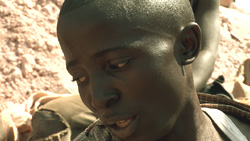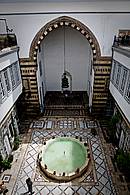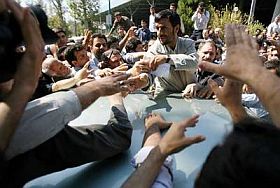For a documentary veteran viewer it is pure pleasure, when you watch a film that gives you surprises you in structure, narration and content. I knew that Slovak/Hungarian Peter Kerekes after his wonderful ”66 Seasons” was working on a big budget film on a somewhat crazy subject: How did they cook for the soldiers on the front, what did they eat, under which circumstances, war and food… but I had no real idea on how he would materialise his idea and construct his film. I must say that I am amazed how innovative and playful and funny and moving and clever and original this great film is.
Chaptered it is – the prologue refers to Chechnya, then follows WW2 battles between Germany and Russia, post-WW2, Hungary 1956, Prague 1968, Balkan wars and much more – told through interviews, b/w archive material, and reconstructions of soldiers on the fields and the best of all: the staging of the cooks with their transportable kitchen making food for the viewers. Placed – as the example in the epilogue – in the water, or in front of a ruin, or in other situations referring to where the battles took place.
But first of all Kerekes demonstrates again his enormous talent for (old) people. He has a brilliant gallery of characters who bring out their memories in a fresh and often humorous manner. Sometimes it is comedy, sometimes it is subtle and sometimes provocative. Storytellers they are, like the woman, who made blini pancakes for the Russian soldiers, and if they did not come home the pancakes were brought to be placed on the tombstone at the cemetery. And of course Kerekes takes the old lady to this venue and asks her several times – out of camera – why? The same old lady tells us in the kitchen that during the siege of Leningrad, there was 100g bread, two thin slices per person per day. In this moment she can’t stand talking about it any longer. Cut to the German baker who is likewise moved by thinking back… The excellent editing, according to the ”open structure” that the dramaturg of the film Jan Gogola always cleverly promotes, this editing is made so the characters, often on both sides of the wars, have a kind of dialogue with each other. That’s all, watch that film, get it to the audience, it is for everybody, for heart and brain.
Slovakia, Czech Republic, Austria, 2009, 88 mins.
http://www.eastsilver.net/home
http://www.jaksevaridejiny.cz/english.php#menu1











